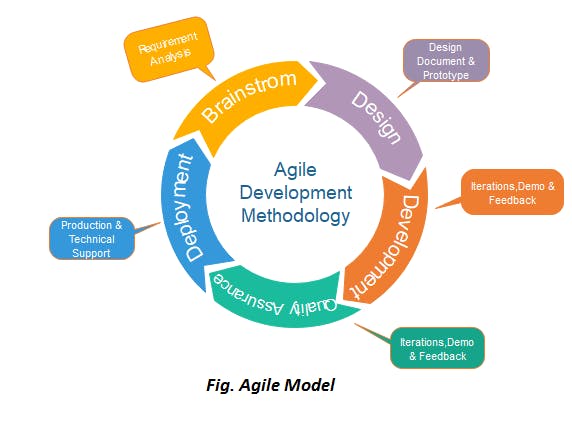The meaning of Agile is swift or versatile. "Agile process model" refers to a software development approach based on iterative development. Agile methods break tasks into smaller interations, or parts do not directly involve long term planning. The project scope and requirements are laid down at the beginning of the development process. Plans regarding the number of iterations, the duration and the scope of each iteration are clearly defined in advance.
Each iteration is considered as a short time frame in the agile process model, which typically lasts from one to four weeks. The division of the entire project into smaller parts helps to minimize the project risk and to reduce the overall project delivery time requirements.

Phases of Agile Model:
Requirements gathering - You should explain business opportunities and plan the time and effort needed to build the project.
Design the requirements - You can use the user flow diagram or the high-level UML diagram to show the work of new features and show the work of new features and show how it will apply to your existing system.
Construction/iteration - When the team defines the requirements, the work begins. Designers and developers start working on their project, which aims to deploy a working product
Testing/ Quality assurance - In this phase, the QA team examines the product's performance and looks for the bug.
Deployment - In this phase, the team issues a product for the user's work environment.
Feedback - After releasing the product, the last step is feedback. In this, the team receives feedback about the product and works through the feedback.
When to use the Agile Modle
When frequent changes are required
When a highly qualified and experienced team is available
When a customer is ready to have a meeting with the software team all the time.
When project size is small.
Pros of Agile Method
Frequent Delivery
Face-to-Face communication with client
Efficient design and fulfils the business requirement
Anytime changes are acceptable
It reduces total development time
Cons of Agile Model
Due to the shortage of formal documents, it creates confusion and crucial decision taken throughout various phases can be misinterpreted at any time by different team members.
Due to the lack of proper documentation, once the project completes and the developers alloted to another project, maintenance of the finished project can become a difficulty.

